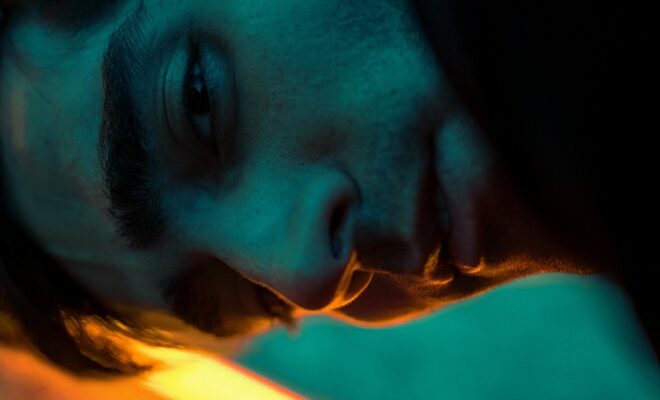 Sajad Karimirad
Sajad Karimirad
Features
3 Interesting Ways Contact Lenses Are Used in Film and TV
Productions and artists go to great lengths to create a well-rounded story that fully immerses audiences. With the right combination of costuming, set design, and acting, films and TV shows can establish the reality of the world they are presenting, no matter how strange and otherworldly this may be.
This is evident in movie classics like How the Grinch Stole Christmas, which saw legendary comedian Jim Carrey transform into the Grinch through a grueling eight-hour process of applying intense facial prosthetics, head-to-toe makeup and full-fur costume, and enlarged contact lenses. The experience was so challenging that they had to bring in a CIA trainer who usually dealt with practicing how to endure torture. Grim as the prospect may be, these elements still became crucial aspects that pulled audiences in and turned the film into one of the most memorable holiday flicks ever. Carrey’s Grinch is, perhaps to his chagrin, a bright spot for the power of contact lenses and makeup for screen — and a great example of how they are used throughout the medium. Today, we’ll look at other excellent use cases for contact lenses in film.
Worldbuilding through character design
Great character design pulls people in and helps build the world visually without using words. It’s a great way to expand on the setting, whether you are looking at the way a group of secondary characters dress or see a specific visual quirk in the protagonist or antagonist. Consider how the film 28 Weeks Later imbues only two related characters with heterochromatic eyes that, though never explicitly stated as an asymptomatic manifestation, become a visual means to establish their unique immunity to the effects of the Rage virus.
Hollywood goes to great lengths to hire talented technicians for custom contact lenses that create these unique aspects for rich worlds and interesting characters. Paul Giamatti’s distinct and convincing lazy eye in The Holdovers is an excellent example of this, which used soft lenses designed by Cristina Patterson, crafted by Zach Ripps and hand-painted by Sarah Rubano to enable Giamatti’s character and the world around him to display the “tragicomic” tone it set to establish. Rubano would also be in charge of other feats of world-building through contact lenses by helping create the zombies’ eyes in “Fear the Walking Dead.” In other sci-fi realms, we see custom lenses bring life to the Sith of the Star Wars universe and simulate new contact lens technology in “Black Mirror” episodes like The Entire History of You.
Creating faithful adaptations
Whether from a book, comic, or real-life figure, faithful adaptations stand out in film and television. While it’s easier to think of wilder tales like The Grinch when considering the role of contact lenses in cinema, it’s fascinating to see how creators use lenses to make figures come to life on the screen accurately. With contact lenses, casting directors can use actors who encapsulate their roles perfectly, even if they don’t have the right eye color for their character. One of the most popular examples of this is Orlando Bloom, who portrayed Legolas in the Lord of the Rings and Hobbit films. These major blockbusters were born from iconic tales by JRR Tolkien, so key features like the Elven prince’s sharp blue eyes (as opposed to Bloom’s natural dark brown peepers) could only be achieved through colored contact lenses.
Modern lenses accomplish this look comfortably, a boon for new filmmakers and fans who want to emulate the character. Manufacturers like Alcon have essentially perfected the formula, creating variants like Air Optix and Dailies, which offer more vibrant or natural colors respectively while using more breathable and hydrating material for extended wear. Eyes may seem like a minute detail, but fans appreciate the effort because they are vital to the characters’ identities. They also show reverence for the books or materials that came before, such as the golden eyes donned by “The Witcher’s” Geralt (Henry Cavill) or Twilight’s Edward Cullen (Robert Pattinson), to indicate the specific nature of their characters that separates them from the rest of the fantastical beings in their worlds.
Simulating real-world conditions
SFX contact lenses are also useful tools in the filmmaker’s arsenal to simulate real-world conditions. This can be a great way to move the plot along and indicate specific changes in the character’s journey. In “How I Met Your Father,” this is a comedic foil for Val (Francia Raisa) as she needs to correct her vision. Afraid of wearing contacts but refusing to wear glasses, she spends much of one episode trying to get them on and ends up getting an eye injury in the process. These same techniques are also used in more serious fare, with scleral lenses being used to simulate severely bloodshot eyes in films like The Beach.
In Anatomy of a Fall, sighted actor Milo Machado-Graner portrayed the blind Daniel using subtle milky grey contact lenses that could depict his condition in different lighting and environments. With the right materials, lens technicians can deepen audience immersion by simulating medical conditions or “manipulating” time by helping actors look older, enriching the stories they’re trying to tell.





You must be logged in to post a comment Login